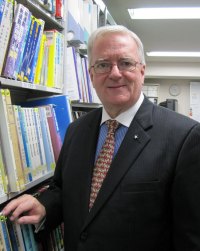Another One Bites the Dust: Ebrall Examines the Merger of AECC University College with the British School of Osteopathy

In the ever-evolving landscape of chiropractic education, the future of chiropractic practice stands at a pivotal crossroads. Phillip Ebrall, in his recent editorial for the Asia-Pacific Chiropractic Journal, raises pressing concerns regarding the fusion of the Anglo-European College of Chiropractic with the British School of Osteopathy, suggesting that this merger may signify an existential threat to the very essence of chiropractic teaching and practice. Ebrall's commentary, titled "Another one bites the dust: Are we witnessing the demise of our profession?" [Ebrall P. Another one bites the dust: Are we witnessing the demise of our profession?. [Editorial]. Asia-Pac Chiropr J. 2023;4.2], delves deep into the historical roots of chiropractic education and ponders on its uncertain trajectory in the modern era.
Background
In October 2023, the Anglo-European College of Chiropractic (AECC) announced its merger with the University College previously known as the British School of Osteopathy. The revelation of this integration was intended to be discreet but was prematurely disclosed by the osteopaths, thereby altering the intended course of the narrative. Phillip Ebrall, in his editorial, reflects on the implications of this merger for the chiropractic profession and questions the purity of its educational foundation in light of these recent events.
Analysis
The Controversy of Disclosure
The merger was intended to be confidential until a formal announcement on 9 October 2023. However, the Osteopaths unveiled the merger ahead of time on their website. This pre-emptive move was seen as an attempt to shift the narrative and prompted other media outlets, including the Asia-Pacific Chiropractic Journal and McCoy Press, to break the story ahead of schedule.
Historical Context and the Chiropractic Identity
Chiropractic education, according to Ebrall, is at risk of losing its unique identity and principles. The AECC's move to merge with an osteopathic institution is perceived as a dilution of the foundational chiropractic principles established in 1895 by D.D. Palmer. The merging of the two schools risks conflating the teachings and philosophies of both practices, potentially leading to a loss of distinctiveness and purity in chiropractic education.
A Pattern of Assimilation?
Drawing parallels with the past, Ebrall cites examples where chiropractic institutions either integrated with osteopathy or were overshadowed by it. The Phillip Institute of Technology in Australia, for instance, discontinued its chiropractic program while retaining osteopathy. Ebrall fears that the merger of AECC may set a precedent that further undermines the chiropractic profession's distinct identity.
Navigating a New Landscape of Chiropractic Education
While the global landscape of chiropractic education is rapidly changing, new opportunities are arising. Institutions such as the Scotland College of Chiropractic, the Barcelona College of Chiropractic, and the Australian Chiropractic College have made significant strides in upholding pure chiropractic principles. However, the time is fast approaching where chiropractic colleges in the United States will have the capability to offer hybrid formats, blending traditional learning with distant, virtual chiropractic education. The long-term success and acceptance of these colleges, including those in Scotland, Barcelona, and Australia, will hinge upon their response to the pressing challenges of the day. Their future is inextricably linked to how they navigate the marginalization of subluxation management being advocated by the World Federation of Chiropractic (WFC) - McTimoney, which many moons ago started off as a school embracing subluxation, appears to have gone all in with the WFC, their subluxation bashing and embrace of the great reset.
All chiropractic schools no matter the location also have to deal with the stance taken by the General Chiropractic Council (GCC) – which currently rejects licensure for graduates from programs that deeply embrace concepts like subluxation, vitalism, and core chiropractic philosophies, such as innate and universal intelligence.
Conclusion
The merger of AECC with a former osteopathy college represents a significant shift in the landscape of chiropractic education in the Asia-Pacific region. Ebrall's editorial underscores the importance of preserving the unique principles and teachings of chiropractic amidst the evolving academic environment. The future of chiropractic education hinges on a balance between integration for survival and upholding foundational principles to retain its unique identity in the healthcare realm.

International Report
- Defending the use of Routine X-Rays in Chiropractic Care: A Public Health Imperative
- Addressing Misconceptions About Imaging: The Case for Routine and Repeat X-Rays in Chiropractic Care
- Those Who live in Glass Houses Shouldn’t Throw Stones: The Hidden Burden of Birth Trauma in Australia
- The Australian Chiropractic Board’s Ban on Infant Care: Weak Rebuttals Amidst Medical Bias
- Australian Chiropractic Board Reinstates Ban on Infant Care After Hysterics by Health Ministers













